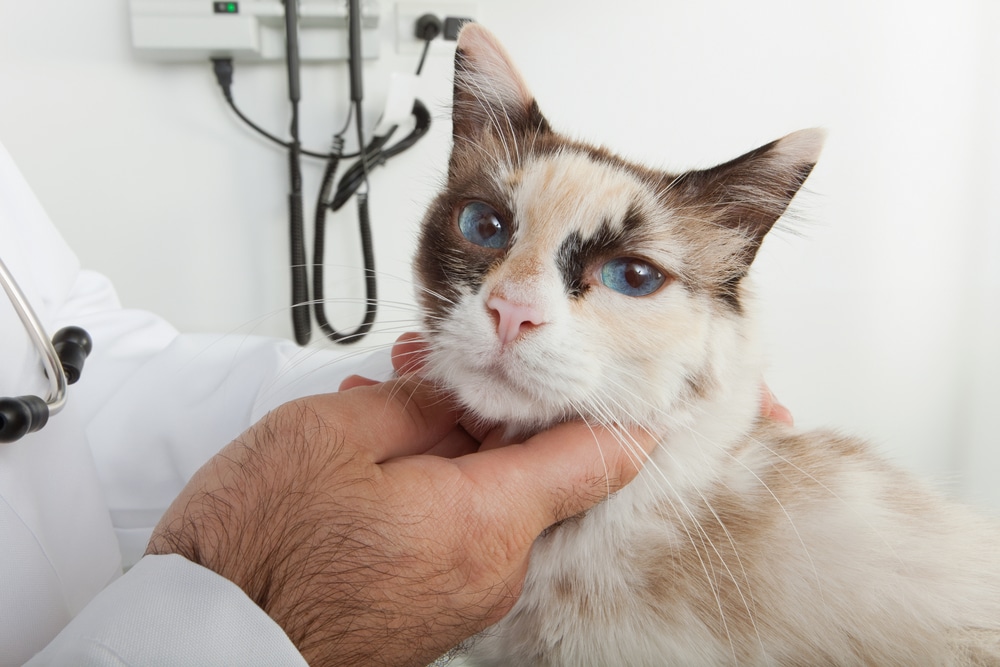neoplasia in cats nose
The nasolacrimal duct is a small structure that connects the lacrimal gland where tears are. Symptoms of neoplasia in cats include 4.

Cat 8 Squamous Cell Carcinoma With Infiltrative Growth Into Nasal And Download Scientific Diagram
While cancer is usually diagnosed in senior cats certain cancers can develop in cats of any age.

. A prolonged infection might turn bacterial which would require antibiotic treatment. Viral rhinitis will generally resolve itself within seven to 10 days. These symptoms should be checked by your veterinarian.
It is a good idea for when swollen nose bridge on cats occurs to consult with your veterinarian. These can cause bleeding from the nose breathing difficulty or facial swelling. Nasal tumors are less common in cats than in dogs making up about 1 of tumors in cats.
Benign nasal tumors include adenoma 19 of epithelial tumors in cats basal cell tumor fibroma and neurofibroma. High individual variability was observed. A nasal tumor is a type of cancer that results from the disorganized uncontrolled production of cells that line the nasal airway.
Cancer in Cats Defined. Nasal vestibule is the most common site for feline nasal SCC malignant melanoma and basal cell tumor. Neoplasia or nasal.
Features that may assist in radiographic diagnosis of neoplasia include the appearance of unilateral aggressive lesions. A shallow defect in the skin. Many diseases affect the skin on the noses of cats.
Ocular squamous cell carcinoma is most common in animals with light pigmentation around the eyes because sun exposure is one of several predisposing factors. The average age of cats at diagnosis is 10 years however cats as young as 3 years have been diagnosed with this type of cancer. Incidence is also higher in males of both species than in females.
There are many different forms of cancer and since the symptoms are so varied any lumps or bumps wounds that dont heal changes in behavior including appetite weight litter. Nasal lymphoma has been reported in FeLV positive as well as FeLV negative cats. Tumors of the nose and paranasal sinuses account for 12 of all canine or feline tumors.
In cats there is some indication that chronic rhinitissinusitis may be an initiating factor for the subsequent development of nasal neoplasia. These signs can include nose bleeding discharge difficulty breathing sneezing facial swelling facial deformity due to growing mass eye discharge weakness andor weight loss. Neoplasia may also develop inside the nose of both cats and dogs.
Other causes of a swollen cat nose Nasolacrimal duct blockage. The symptoms of nasosinal tumors can overlap with those of other causes of nasal disease. Mellanby R J Herrtage M E.
Nasal tumors form a very small percentage of feline tumors and are less common than nasal cancer in dogs. Neoplasms may also develop inside the nose. Nasal tumors occur primarily in the nasal cavity and may later extend to the frontal and paranasal sinuses.
The mean age at time of diagnosis is 9510 years for dogs and 12 years for cats. Recent references from PubMed and VetMedResource. In cats with nasal neoplasia unweighted UniFrac metric did not show a significant difference using ANOSIM analysis when the microbiome of cats with nasal neoplasia that received antibiotics was compared to cats that did not have a history of antibiotic treatment unweighted UniFrac distance p 0465 weighted UniFrac distance p 0159.
Nonocular melanocytic neoplasms are often considered rare neoplasms in cats reported to account for less than 1 of all feline oral neoplasms and approximately 05 of feline cutaneous tumors. Final diagnoses in these cats were rhinitis in 27 primary nasal neoplasia in 21 and non-nasal disease in 16. Your veterinarian will often perform an examination to rule out other conditions.
Cancer also called neoplasia presents in many different often nonspecific ways in cats. In dogs nasal tumors are nearly all malignant and slightly 60 are carcinomas of which. 14 Nevertheless these neoplasms continue to be frequently reported in the literature.
Cryptococcus neoformans is a more common cause of nasal disease in cats and in certain areas even quite common. Squamous cell carcinoma is a common neoplasm in several species. Clinical signs of aspergillosis in the nose and frontal sinus are dominated by profuse mucopurulent nasal discharge and nasal pain.
Galloway P E Kyles A Henderson J P 1997 Nasal polyps in. They are locally invasive and do not normally spread but are almost always malignant. In cats the most common nasal tumor is nasal lymphoma.
The signs with highest predictive value for nasal neoplasia were displacement of midline structures 73 unilateral generalised soft tissue opacity 70 unilateral generalised loss of turbinate detail 69 and evidence of bone invasion 64. Neoplasia may also develop inside the nose of both cats and dogs. In dogs the most common nasal tumor is nasal adenocarcinoma.
2 4 Unlike in dogs 13 however there are no defined prognostic features for feline. These symptoms should be checked by your veterinarian. Further Reading Publications Refereed papers.
Neoplasia may also develop inside the nose of both cats and dogs. What are the symptoms of nasosinal tumors in cats. Nasal adenocarcinomas originate from the glandular cells eg sebaceous glands in the nasal cavity.
Hematopoietic neoplasms including lymphoma are one of the most common cancers diagnosed and treated in veterinary medicine and account for approximately one-third of all cancers in cats. Respiratory disorders whether acute or chronic can affect the nasal cavity and nasopharynx. Additionally unilateral lateral bone erosion and loss of teeth associated with adjacent intranasal disease were more prevalent in cats with neoplasia 78 and 518 respectively than in cats with chronic rhinitis 13 and 011 respectively.
Abnormal swellings that persist or continue to grow Sores that do not heal Weight loss Loss of appetite Bleeding or discharge from any bodily opening Offensive odor Difficulty eating or swallowing Hesitation to exercise or loss of stamina Persistent. The incidence in dogs is twice that in cats. Nasal infections also occur in dogs.
Lymphoma is a common form of neoplasia in dogs and cats characterized by swelling of one or several lymph nodes in the body.
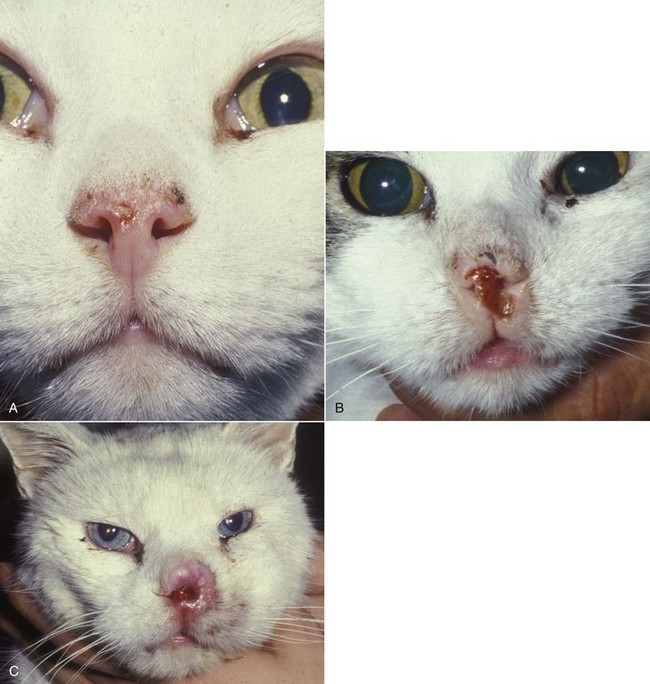
Tumors Of The Respiratory System Veterian Key
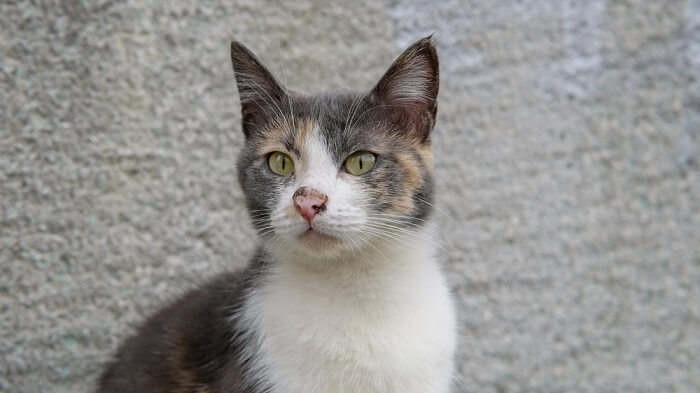
Nose Cancer In Cats Causes Symptoms Treatment All About Cats

Facial Distortion And Epiphora In A Cat With A High Grade Large B Cell Download Scientific Diagram
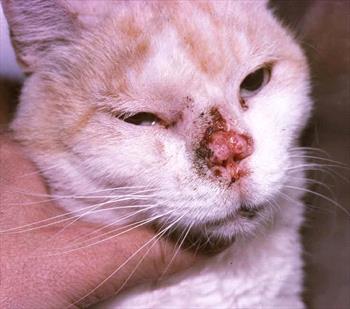
Nasal Squamous Cell Carcinoma In Cats Veterinary Partner Vin

Diseases Of The Feline Nasal Planum Vet Focus

My Cat Has Nose Cancer Diagnosed 5 Years Ago Does It Hurt R Cats

Cat 7 Squamous Cell Carcinoma On Nose Stage T4 Two Sessions Of Download Scientific Diagram

Nose And Sinus Cancer Squamous Cell Carcinoma In Cats Petmd

Canine And Feline Nasal Tumors

Learn About Nasal Cancer In Cats Petcure Oncology
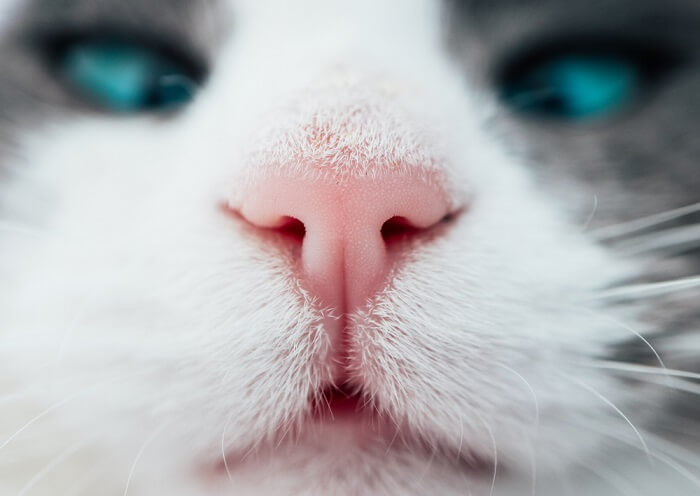
Nose Cancer In Cats Causes Symptoms Treatment All About Cats

Visiting Vet Cappuccino The Tabby Cat The Martha S Vineyard Times

Nasal Squamous Cell Carcinoma In A Cat Treated With One Session Of Download Scientific Diagram
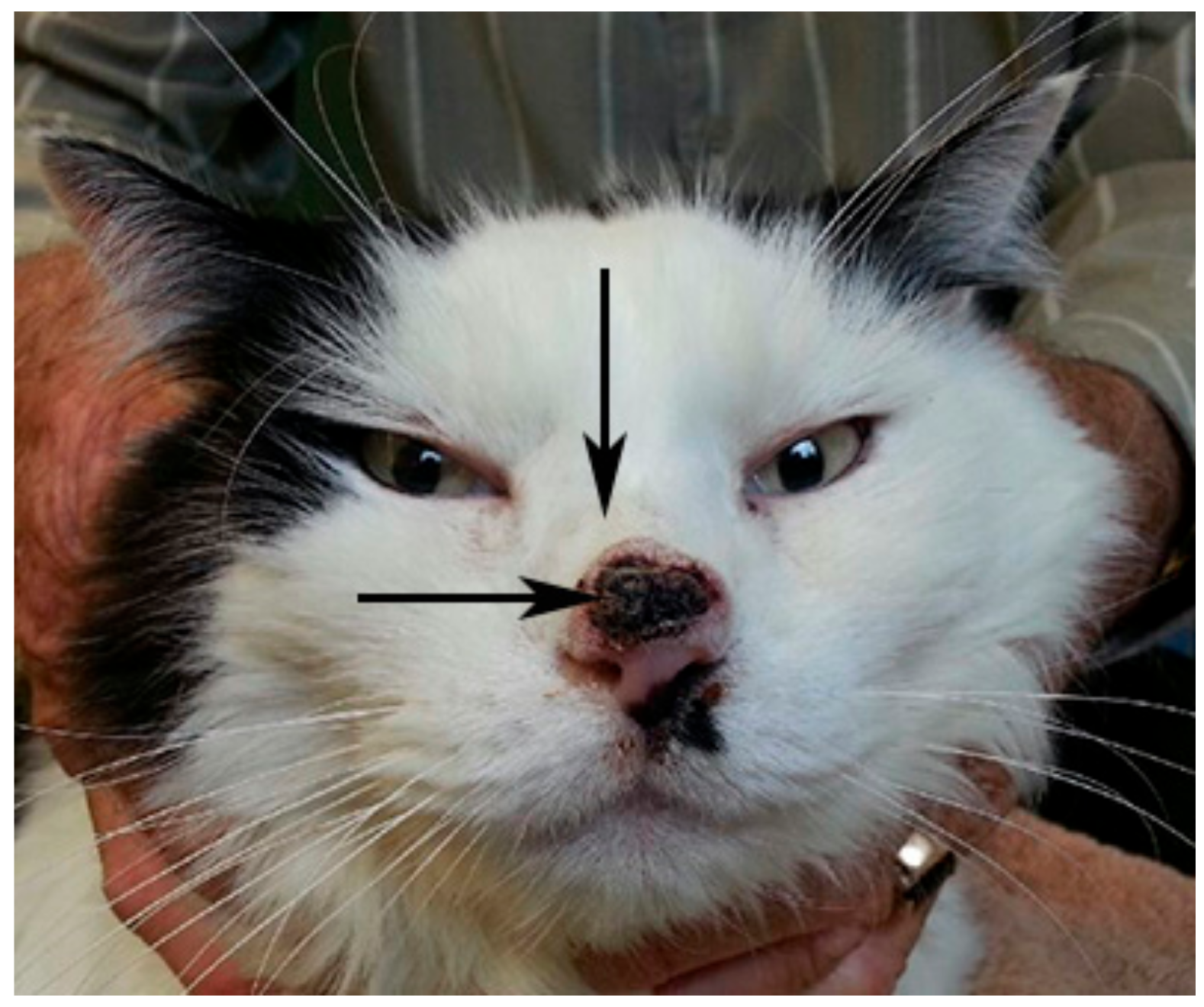
Viruses Free Full Text Identification Of A Novel Papillomavirus Associated With Squamous Cell Carcinoma In A Domestic Cat Html
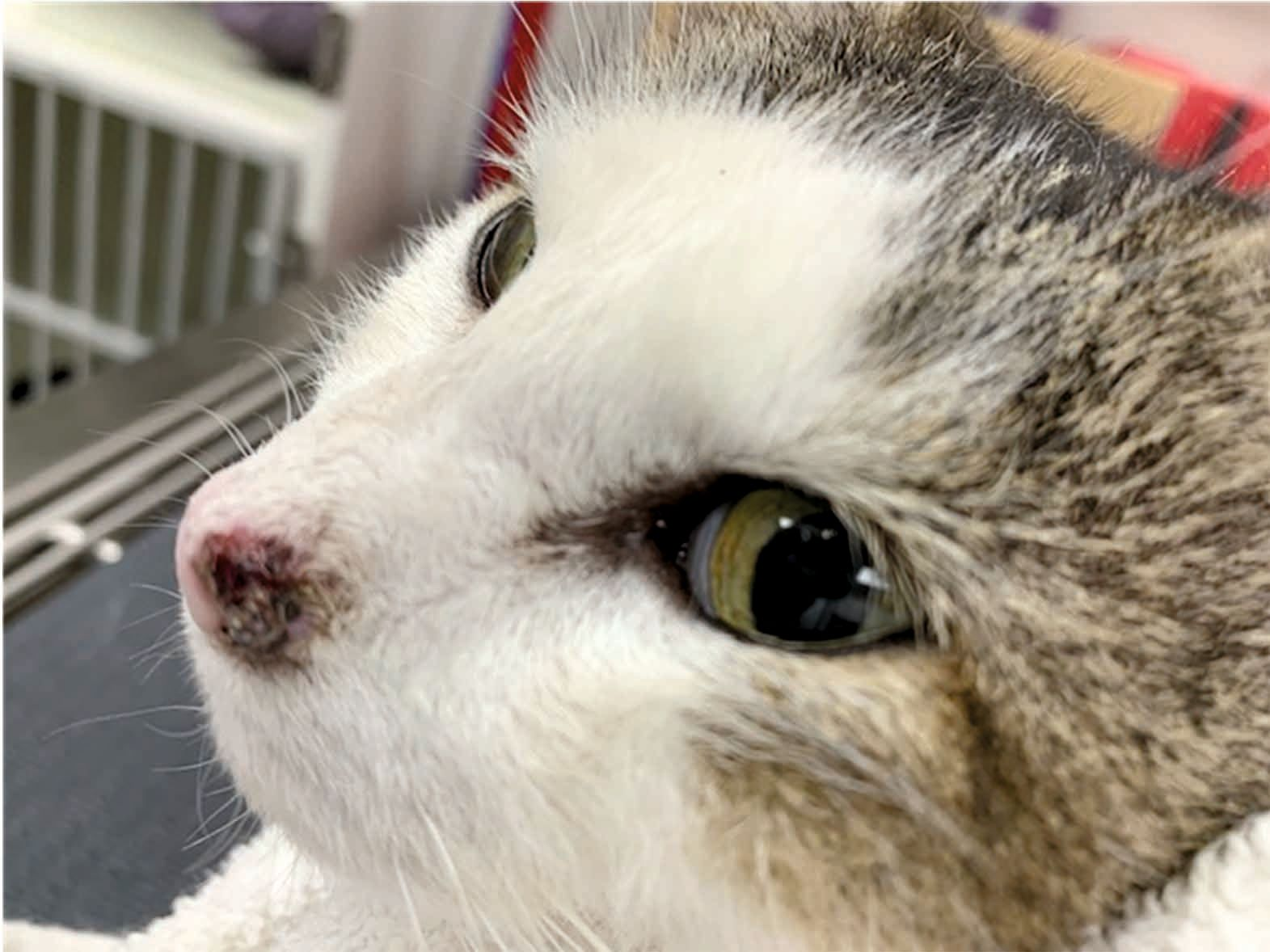
Diseases Of The Feline Nasal Planum Vet Focus

Cat 6 Squamous Cell Carcinoma On Nose Stage T2 One Ect Session Download Scientific Diagram
